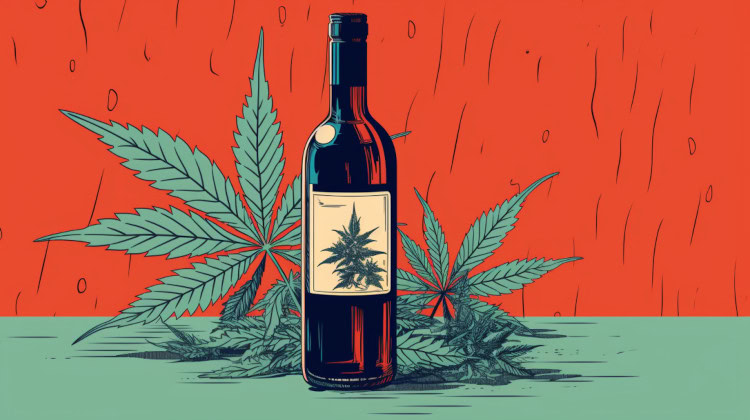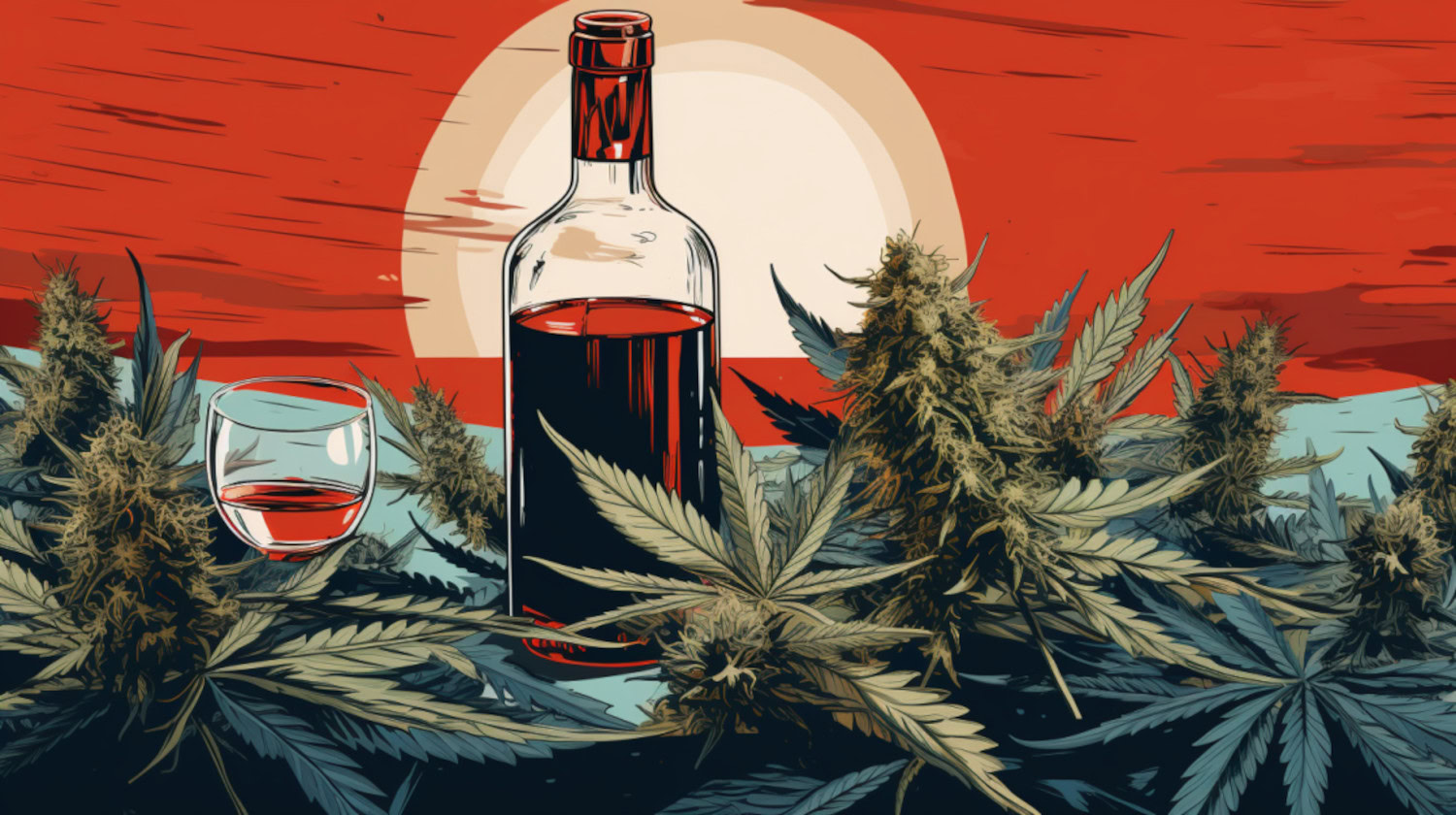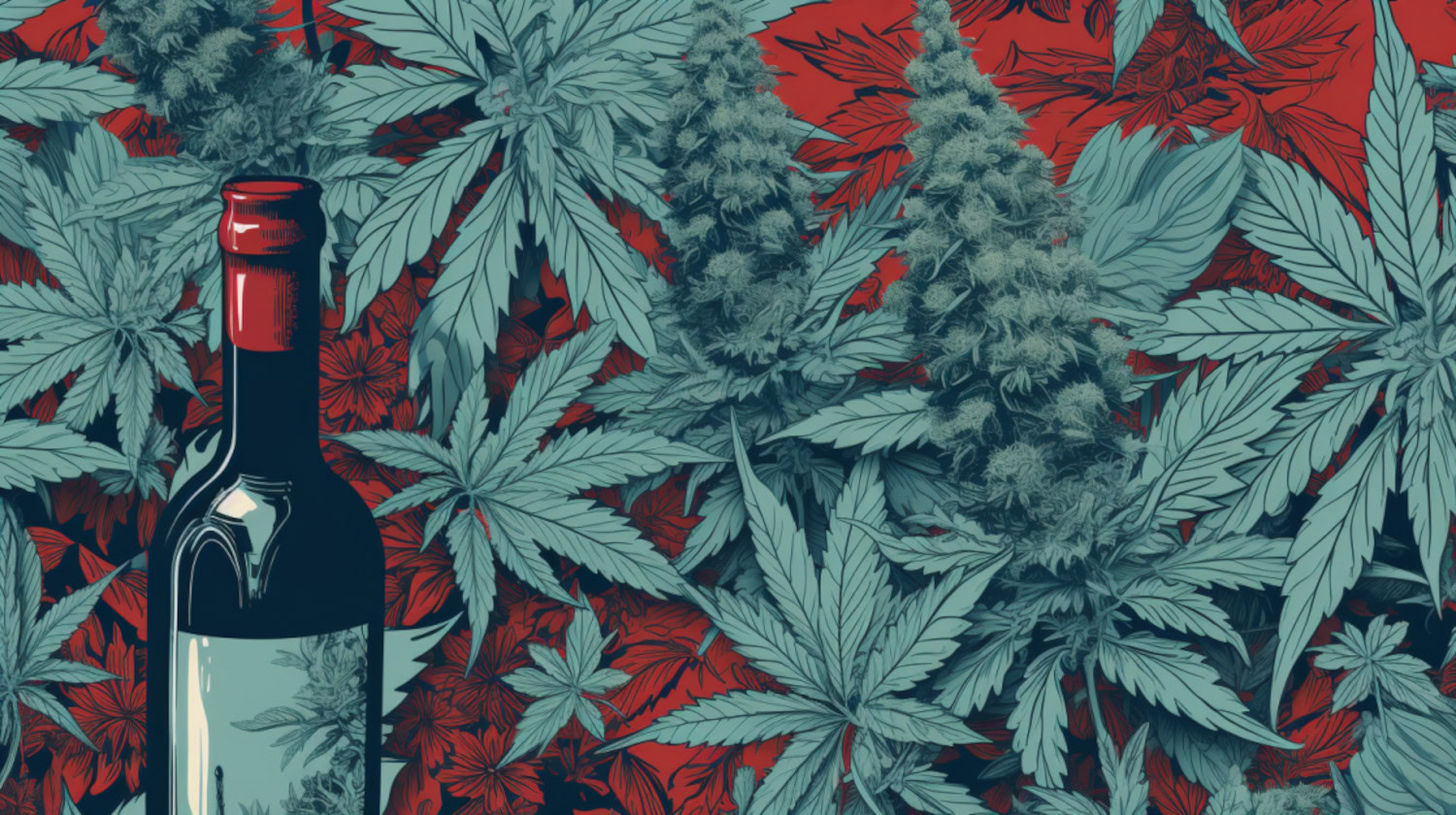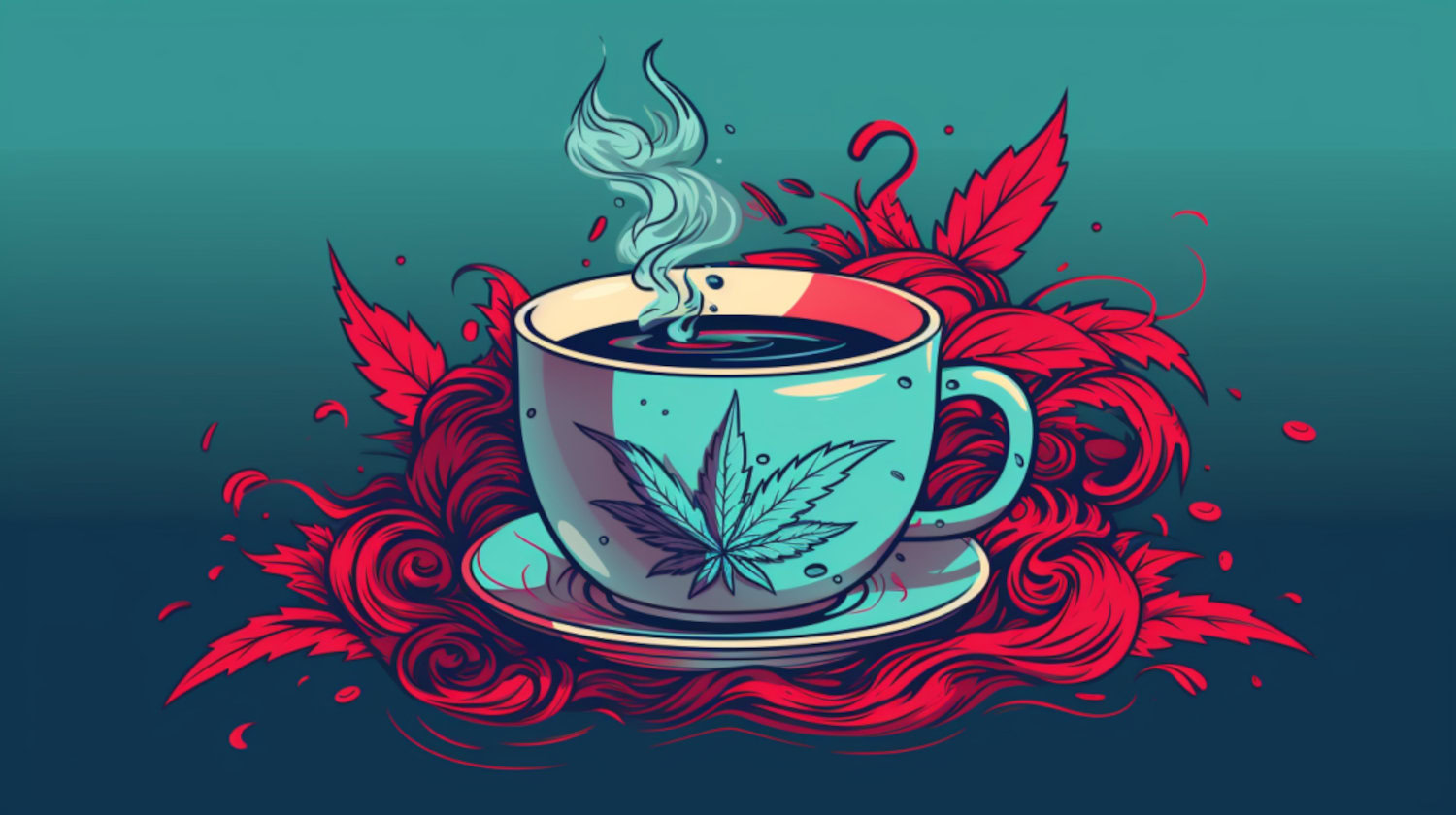Key Takeaways
- CBD wine can provide some of the same relaxing effects without the alcohol.
- Store-bought CBD wine will not contain alcohol, but you can make it with alcohol at home.
- Decarb the CBD flower > Heat the wine > Add the decarbed flower > Cool, strain, and bottle the wine > Store and/or serve!
CBD wine combines the potentially therapeutic effects of cannabidiol (CBD) with the sensory experience of drinking wine. Unlike traditional wine, which contains alcohol, CBD wine is typically non-alcoholic, making it an alternative beverage for those wanting to avoid alcohol while still enjoying the flavors and rituals associated with wine consumption.
Making your own CBD wine at home allows you to select the flavors and potency to personalize the experience.
What is CBD Wine?
The 2018 Farm Bill, which legalized CBD-rich hemp, was the beginning of CBD infusion into everyday products, including wine.
Federal regulations prohibit the commercial sale of beverages combining alcohol and cannabis or hemp. However, vintners began to formulate practices to incorporate CBD into non-alcoholic wines, and some cannabis enthusiasts have crafted CBD wine at home by blending high-quality wine (or non-alcoholic wine) with CBD extracted from hemp plants.
Cannabis wine found at retailers is made with only CBD, allowing consumers to enjoy the taste and experience of wine without alcohol. It’s available in every popular varietal: white, red, or rosé.
Depending on the infusion method, CBD wine can include notes of cannabis terpenes and flavinoids layered with grape blend flavor.
Although CBD wine won’t make a person feel intoxicated, consumers may feel the relaxed effects of this non-intoxicating cannabinoid. The amount of CBD per glass or bottle can vary depending on the producer. A standard bottle of wine is 750ml, or about five glasses per bottle, making dosage easy to calculate.
CBD's effects are the same as those of other CBD edibles: they metabolize via the liver. Effects begin within 30 minutes to an hour and last up to four hours.1 Users may feel calm after the CBD enters the body as the cannabinoid has anxiolytic, analgesic, and neuroprotectant effects.2,3
Why Make CBD Wine?

CBD wine is one way to incorporate the social aspects of drinking alcohol with the potential benefits of cannabidiol.
Another benefit of CBD wine is that it allows consumers to unwind and relax without the adverse effects of alcohol, like hangovers.
Creating CBD wine can be a complex, in-depth hobby, a one-day activity, or as simple as adding CBD tincture to a poured glass.
Store-bought CBD wines are available at various price points. However, making CBD wine can be preferable for consumers' palates, wallets, and health.
Flexibility
Making CBD wine at home is easier than tending a vineyard and allows consumers to customize wine that fits their preferences. To quickly make CBD wine, select a high-quality CBD oil and mix it with the wine, tailoring the dosage to meet your desired potency needs.
Therapeutic benefits.
Many people report using CBD to make them feel calm. Studies have shown CBD has additional benefits, including reducing anxiety, chronic pain, and inflammation.2
Reasons Not to Make CBD Wine
Despite its benefits, making infused wine at home might not be for everyone.
While CBD wine offers a novel way to get the potential benefits of cannabidiol, there are several reasons why some people avoid it, particularly those looking to avoid consuming alcohol.
Combining cannabis with alcohol can lead to heightened effects of both substances. According to the FDA, the risk of sedation or drowsiness increases with the use of alcohol when combined with CBD or other drugs used to treat anxiety, panic, stress, or sleep disorders.
Store-bought CBD beverages are often more convenient and might come with the added assurance of quality control and accurate dosing. However, getting a precise and consistent dosage of CBD can be difficult when making CBD wine at home.
Crossfading, or overconsumption of THC and alcohol, may produce very unpleasant sensations like nausea, disorientation, or sweating. Purchasing a product that has been accurately tested for cannabinoid levels and using an edible dosage calculator may eliminate some of the risk of THC contamination.
Lastly, the legality of CBD products varies throughout the United States. Before making or purchasing CBD wine, make sure to comply with local regulations.
What You Need to Make CBD Wine

Whether done by a seasoned DIY enthusiast or a beginner, making CBD wine at home can be easy. However, making an alcohol-free wine at home can be difficult without access to alcohol-free wine, special equipment, or technical know-how. The recipe below starts with commercially made alcohol-free wine.
CBD wine can be made with CBD flower, a CBD tincture, or oil.
CBD Flower Wine
Making CBD wine involves a few steps:
- Decarboxylating the CBD flower – While it might sound complex, decarboxylation is a simple but essential step to release the full potency of the CBD flower.
- Infusing the cannabis into the wine.
- Properly storing the finished product.
Here’s a list of the essential items you’ll need for a mulled CBD wine:
- Wine: One bottle (alcoholic or non-alcoholic). Select a wine you’ll enjoy, and opt for a high-quality option.
- CBD Flower: Approximately 20-25 grams of CBD flower.
- Saucepan: This is needed to heat and infuse the wine with CBD flower and other ingredients.
- Cheesecloth or Fine Strainer: This is to strain the plant material out of the infused wine.
- Glass bottle: Clean, sterilized bottles are best for the finished product
- Oven: For decarboxylating cannabis, a crucial step is to activate the CBD.
- Baking Sheet: For decarboxylating CBD flower
- Funnel: For pouring the wine into storage bottles
- Optional Flavorings: Herbs, fruits, or spices to enhance the flavor profile to your preference.
For CBD tincture wine, you need a pitcher and a bottle of CBD oil or tincture of your choice.
How to Make CBD Wine
There are different ways to infuse wine with CBD. Consumers can use a heat method or a cold method.
Mulled Wine with CBD Flower
With your supplies on hand, here are step-by-step instructions for making a CBD wine.
1. Decarboxylate the Cannabis: Preheat your oven to 250°F (120°C). Break the cannabis into small pieces and spread it on a baking sheet. Bake in preheated oven for 25-40 minutes, stirring occasionally to ensure even heating.
2. Heat the Wine Infusion: Pour your wine into a large saucepan. Heat to a simmer on low to medium-low.
3. Add the CBD Flower and Optional Spices: Add the decarbed flower and stir. Do not allow it to boil since excessive heat can degrade the CBD and the wine’s flavor. Next, add optional flavorings of your choice. Some options are orange slices, ¼ teaspoons of cinnamon, nutmeg, or cardamom. Continue to simmer for 30 minutes, stirring occasionally.
4. Strain and Bottle the Wine: Remove the saucepan from the heat and allow it to cool. Straining the infused wine ensures no solid particles remain in the final product. Line a funnel with cheesecloth and place in a clean, sterilized bottle. Seal the bottle with a cork or cap.
5. Store/Serve the CBD Wine: Store your bottled CBD wine in a cool, dark place or refrigerator. Serve it when it reaches the desired temperature, or allow the bottle to sit for 24 hours for the flavors to meld together.
Alternatively, you can make CBD wine using tinctures or oils. This recipe for CBD sangria requires no cooking or decarboxylation; just add ingredients to a pitcher and chill overnight to allow the flavors to blend. Oils will not blend as well as alcohol-based tinctures.
Chilled Sangria Wine with CBD Tincture
In a large glass pitcher, mix:
- One bottle of alcohol-free dry red wine
- ½ medium apple (remove core, skin on, chopped)
- ½ medium orange (with rind, seeds removed, sliced)
- 3 Tablespoons brown sugar or white sugar
- ¾ cup orange juice
- 4 ml (4 dropper fulls) of CBD tincture, adjusted to your dosage preference
- Seltzer or Ginger Ale
- Ice
Refrigerate until cold or overnight. Serve with ice, top with a splash of seltzer or ginger ale, and garnish with an orange slice.
Other Options for CBD Wine

There are alternate ways to enjoy CBD as a beverage without a DIY process.
CBD wine is available in some stores and online retailers. These commercially produced CBD wines are typically non-alcoholic, offering the benefits of CBD without the effects of alcohol. Federal law prohibits the sale of alcoholic beverages combined with cannabis. If you’d like alcoholic wines with CBD or THC, DIY is the only option.
If CBD wine isn't readily available or you're looking for other ways to enjoy cannabis-infused beverages, the industry has a few new options to choose from. Some popular choices include:
- CBD Water: Infused with CBD, this refreshing drink offers hydration along with the benefits of CBD.
- CBD Beer: Non-alcoholic beers infused with CBD provide a similar experience to traditional beer without the intoxicating effects.
- THC Drinks: For those who live in areas where THC is legal, THC-infused cold beverages offer an intoxicating experience combined with the flavors of your favorite teas, sodas, or seltzers.
- CBD Tea and Coffee: These beverages are infused with CBD and can be a comforting way to incorporate CBD into your daily routine. They may be available in beans, ground coffee, and single-serving cups.
Is making DIY CBD wine cost-effective compared to store-bought options?
Since no special equipment is needed to make CBD wine at home, the only expenses are the base wine and the CBD for infusion.
Prices for commercial CBD wines are about the same as a good bottle of wine. Alcohol-free wines, used for infusions, are generally less expensive. The cost of CBD flower can vary.
Overall, creating your own cannabis-infused wine can yield mild savings, and customizing the blend and dosage has advantages.
Whether you choose to make your own CBD wine at home or opt for store-bought alternatives, the growing popularity of CBD-infused beverages provides a variety of ways to enjoy the benefits of CBD.
References
- MacCallum CA, Russo EB. Practical considerations in medical cannabis administration and dosing. European Journal of Internal Medicine. 2018;49(49):12-19. doi:https://doi.org/10.1016/j.ejim.2018.01.004
↩︎ - Peng J, Fan M, An C, Ni F, Huang W, Luo J. A narrative review of molecular mechanism and therapeutic effect of cannabidiol (CBD). Basic & Clinical Pharmacology & Toxicology. 2022;130(4):439-456. doi:https://doi.org/10.1111/bcpt.13710
↩︎ - Bhunia S, Kolishetti N, Arias AY, Vashist A, Nair M. Cannabidiol for neurodegenerative disorders: A comprehensive review. Frontiers in Pharmacology. 2022;13. doi:https://doi.org/10.3389/fphar.2022.989717
↩︎
The information in this article and any included images or charts are for educational purposes only. This information is neither a substitute for, nor does it replace, professional legal advice or medical advice, diagnosis, or treatment. If you have any concerns or questions about laws, regulations, or your health, you should always consult with an attorney, physician or other licensed professional.




